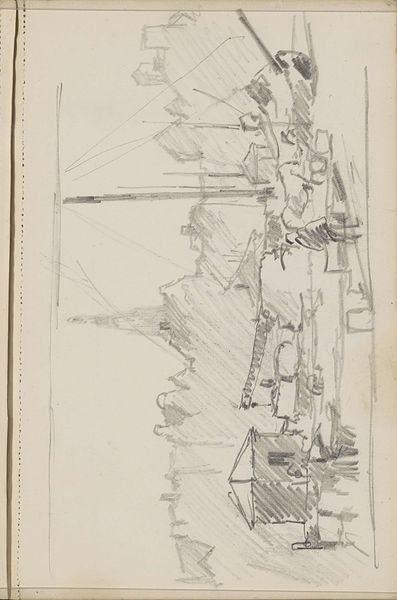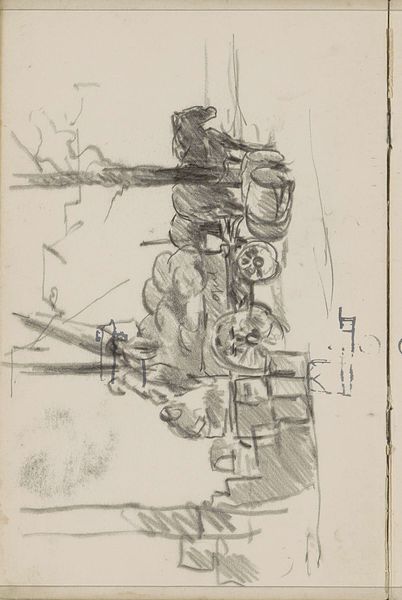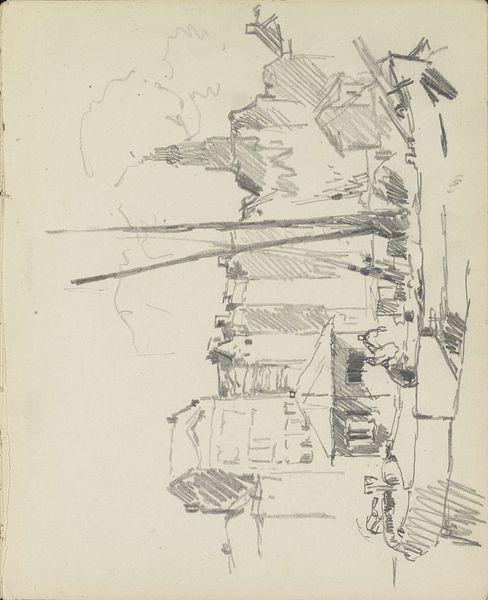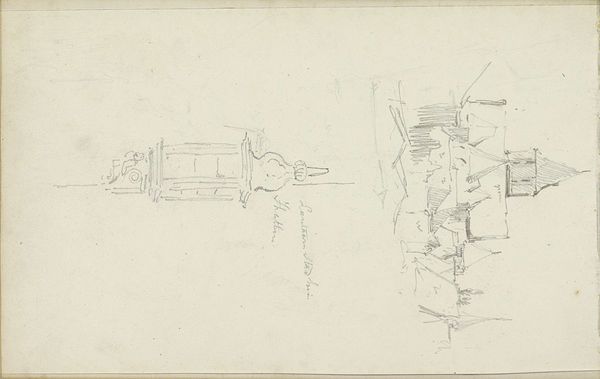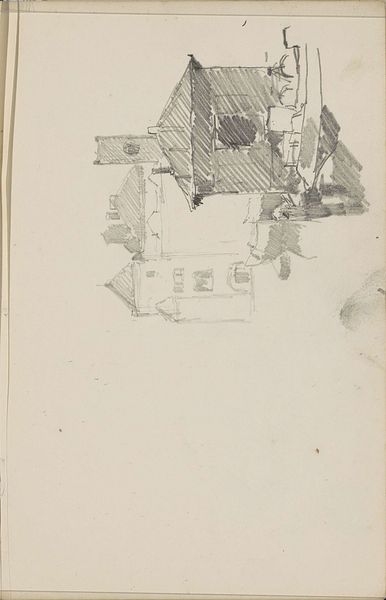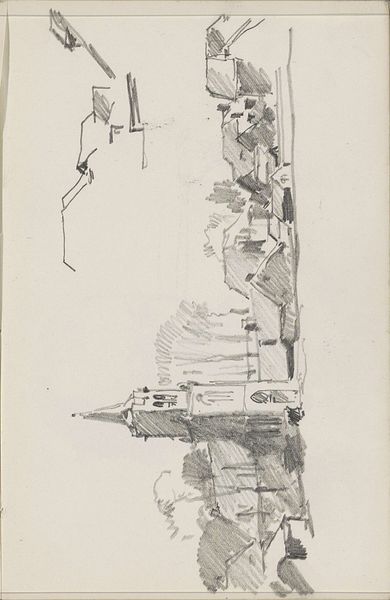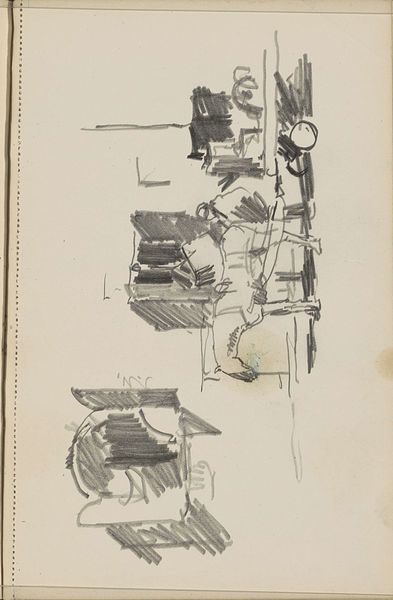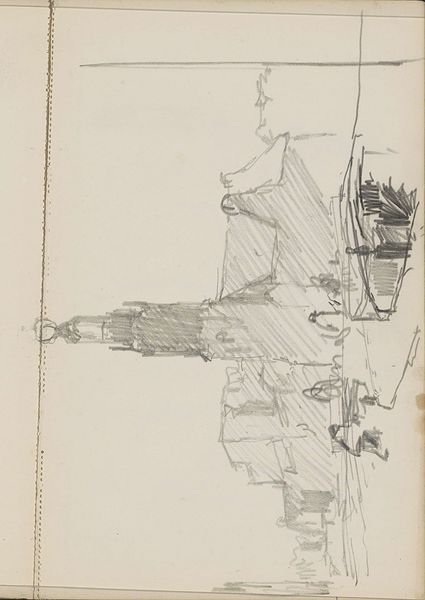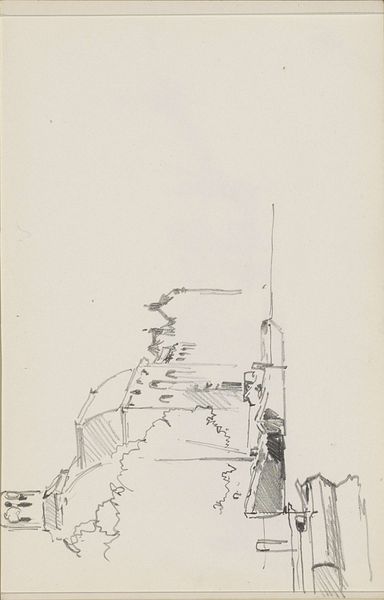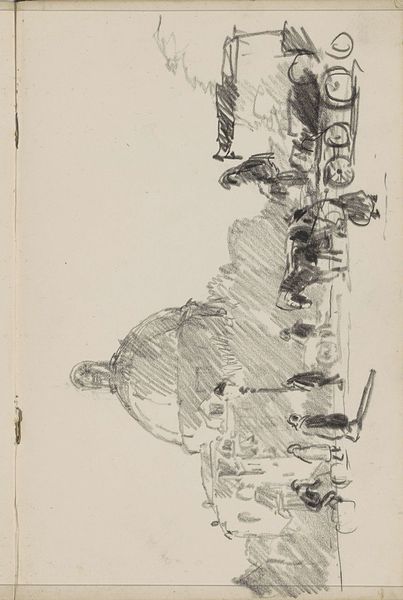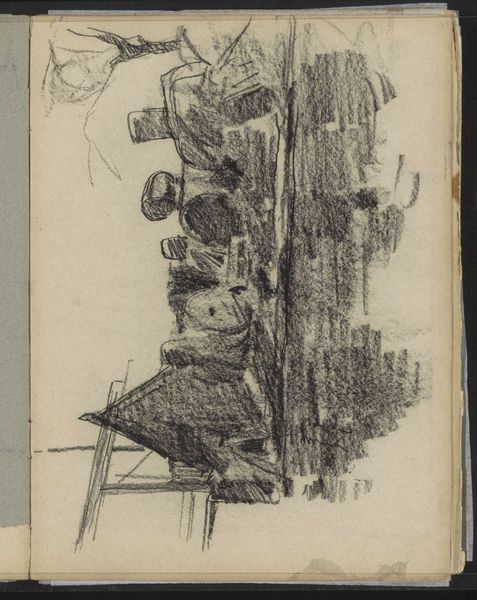
drawing, paper, pencil
#
drawing
#
paper
#
geometric
#
pencil
#
cityscape
#
realism
Copyright: Rijks Museum: Open Domain
Curator: This drawing, currently held in the Rijksmuseum's collection, presents the Ronde Lutherse Kerk aan het Singel in Amsterdam. It is attributed to Cornelis Vreedenburgh and believed to have been made sometime between 1890 and 1946 using pencil on paper. Editor: Oh, wow. It's so light, so ephemeral! Like a memory sketched in a dream. It’s almost floating on the page, isn’t it? Curator: The loose pencil strokes certainly give it an unfinished, fleeting quality. Vreedenburgh employed realism, even in this quick sketch, to capture the essence of the cityscape, focusing on architectural form. Note how he uses geometric forms to evoke a deeper sense of the building. I wonder, what impact does a building like this have within Amsterdam's larger history? Editor: Absolutely. The geometric shape against the urban backdrop is a powerful visual. I imagine being there, feeling the bustle of Amsterdam right up against the stoic beauty of the church. I'd say this could represent how sacred spaces nestle in the commotion of life, you know? Almost hidden, but totally essential. Curator: Considering Amsterdam's religious and political history, where various groups sought refuge, this church embodies themes of tolerance and inclusion. These themes highlight broader ideas around power structures and spatial representation. Editor: See, to me, it's a little melancholy. Maybe it's the monochrome, or that hazy outline. Makes me ponder impermanence. You’ve also got to wonder why Vreedenburgh chose this perspective—like a casual passerby’s quick glance. Curator: That perspective places us in an interesting relationship to the building, both distant and intimate. His stylistic choices, even within a seemingly simple drawing, can inform our reading of societal attitudes toward religious spaces during the early to mid-20th century. Editor: It's a delicate balance, isn't it? Solid architecture represented with such fragile lines. It’s just food for thought, you know? Thank you, Vreedenburgh, for leaving us your whisper of a moment. Curator: Indeed, Vreedenburgh gives us an invitation into a multi-layered reading of urban space. A single image allows for examination across a broad timeline, linking religious, cultural, and architectural histories together.
Comments
No comments
Be the first to comment and join the conversation on the ultimate creative platform.
